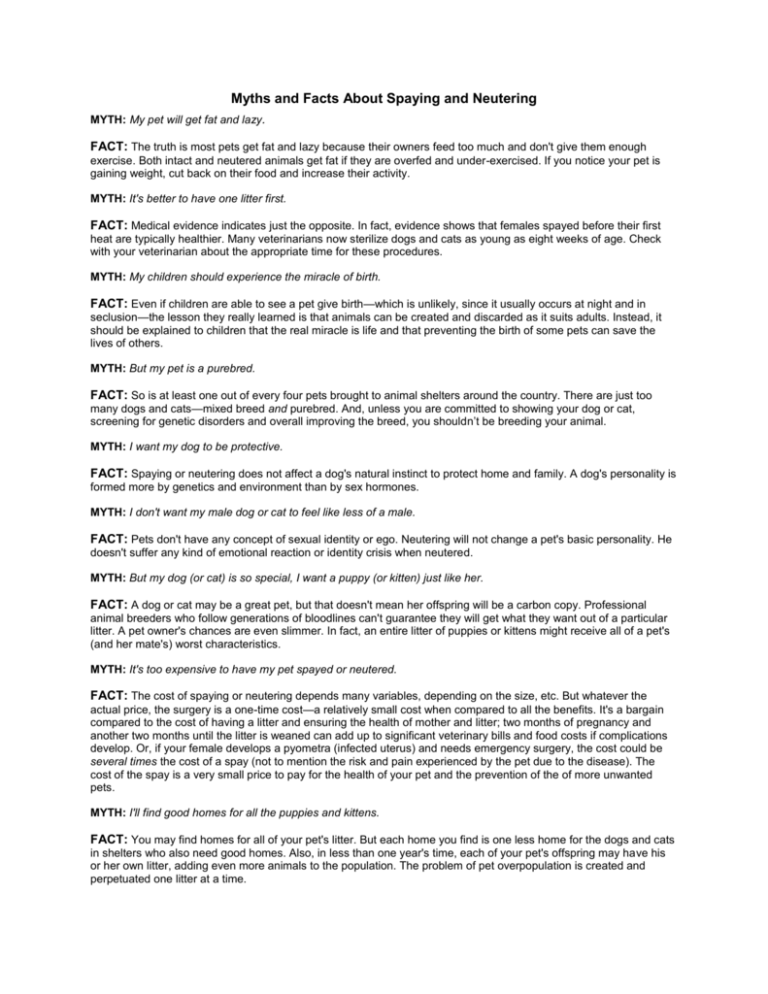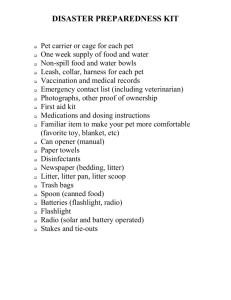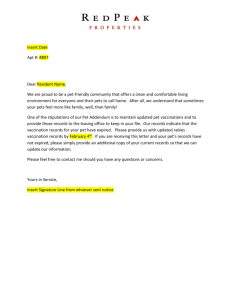
Myths and Facts About Spaying and Neutering
MYTH: My pet will get fat and lazy.
FACT: The truth is most pets get fat and lazy because their owners feed too much and don't give them enough
exercise. Both intact and neutered animals get fat if they are overfed and under-exercised. If you notice your pet is
gaining weight, cut back on their food and increase their activity.
MYTH: It's better to have one litter first.
FACT: Medical evidence indicates just the opposite. In fact, evidence shows that females spayed before their first
heat are typically healthier. Many veterinarians now sterilize dogs and cats as young as eight weeks of age. Check
with your veterinarian about the appropriate time for these procedures.
MYTH: My children should experience the miracle of birth.
FACT: Even if children are able to see a pet give birth—which is unlikely, since it usually occurs at night and in
seclusion—the lesson they really learned is that animals can be created and discarded as it suits adults. Instead, it
should be explained to children that the real miracle is life and that preventing the birth of some pets can save the
lives of others.
MYTH: But my pet is a purebred.
FACT: So is at least one out of every four pets brought to animal shelters around the country. There are just too
many dogs and cats—mixed breed and purebred. And, unless you are committed to showing your dog or cat,
screening for genetic disorders and overall improving the breed, you shouldn’t be breeding your animal.
MYTH: I want my dog to be protective.
FACT: Spaying or neutering does not affect a dog's natural instinct to protect home and family. A dog's personality is
formed more by genetics and environment than by sex hormones.
MYTH: I don't want my male dog or cat to feel like less of a male.
FACT: Pets don't have any concept of sexual identity or ego. Neutering will not change a pet's basic personality. He
doesn't suffer any kind of emotional reaction or identity crisis when neutered.
MYTH: But my dog (or cat) is so special, I want a puppy (or kitten) just like her.
FACT: A dog or cat may be a great pet, but that doesn't mean her offspring will be a carbon copy. Professional
animal breeders who follow generations of bloodlines can't guarantee they will get what they want out of a particular
litter. A pet owner's chances are even slimmer. In fact, an entire litter of puppies or kittens might receive all of a pet's
(and her mate's) worst characteristics.
MYTH: It's too expensive to have my pet spayed or neutered.
FACT: The cost of spaying or neutering depends many variables, depending on the size, etc. But whatever the
actual price, the surgery is a one-time cost—a relatively small cost when compared to all the benefits. It's a bargain
compared to the cost of having a litter and ensuring the health of mother and litter; two months of pregnancy and
another two months until the litter is weaned can add up to significant veterinary bills and food costs if complications
develop. Or, if your female develops a pyometra (infected uterus) and needs emergency surgery, the cost could be
several times the cost of a spay (not to mention the risk and pain experienced by the pet due to the disease). The
cost of the spay is a very small price to pay for the health of your pet and the prevention of the of more unwanted
pets.
MYTH: I'll find good homes for all the puppies and kittens.
FACT: You may find homes for all of your pet's litter. But each home you find is one less home for the dogs and cats
in shelters who also need good homes. Also, in less than one year's time, each of your pet's offspring may have his
or her own litter, adding even more animals to the population. The problem of pet overpopulation is created and
perpetuated one litter at a time.
Copyright © 2004 The Humane Society of the United States. All rights reserved.








